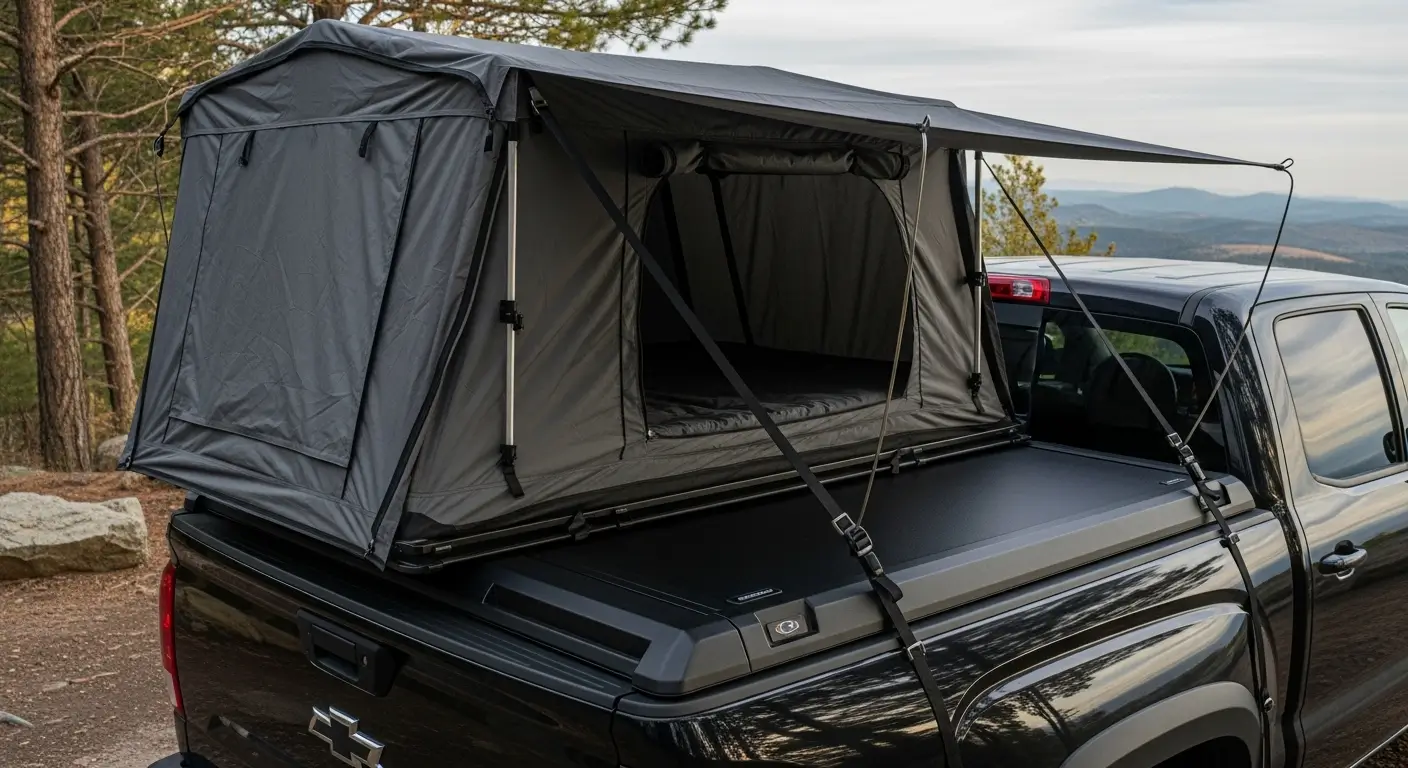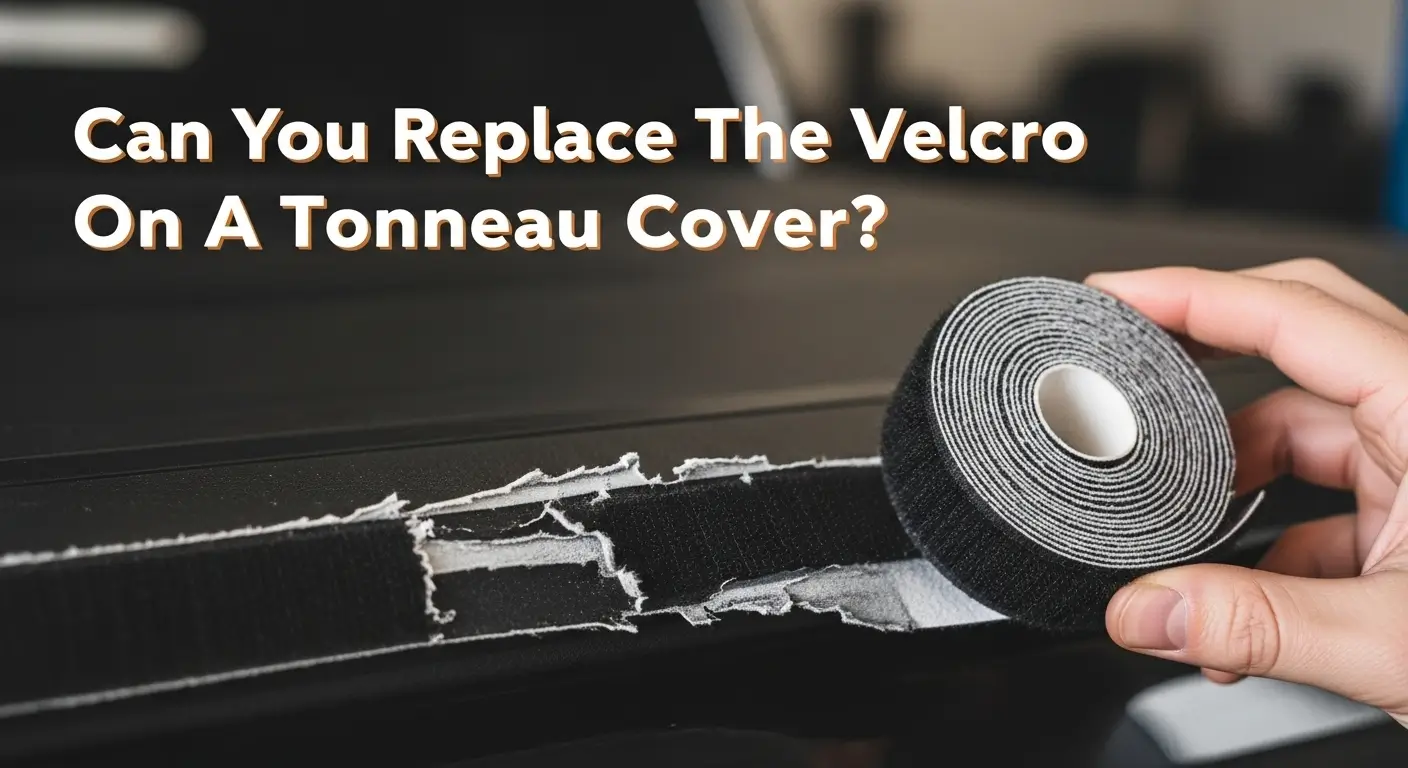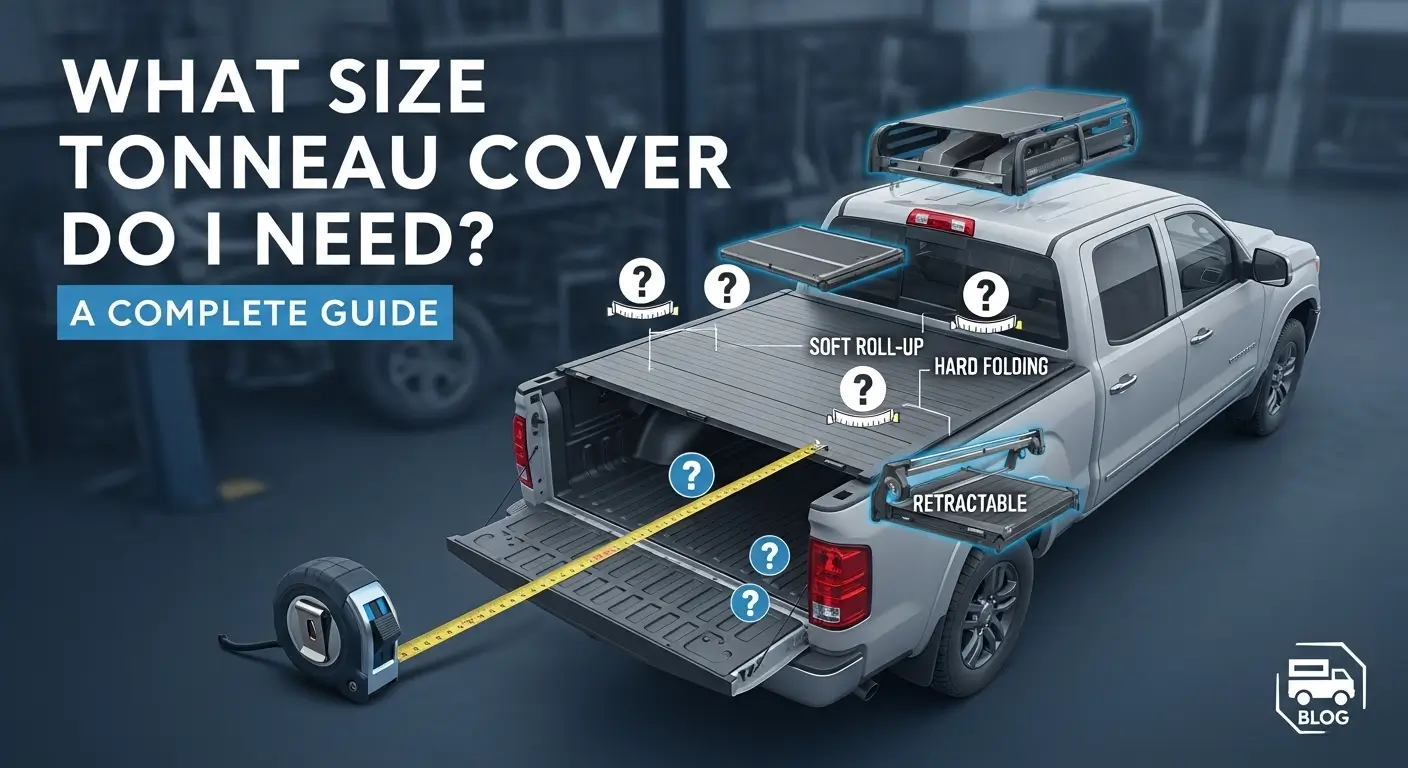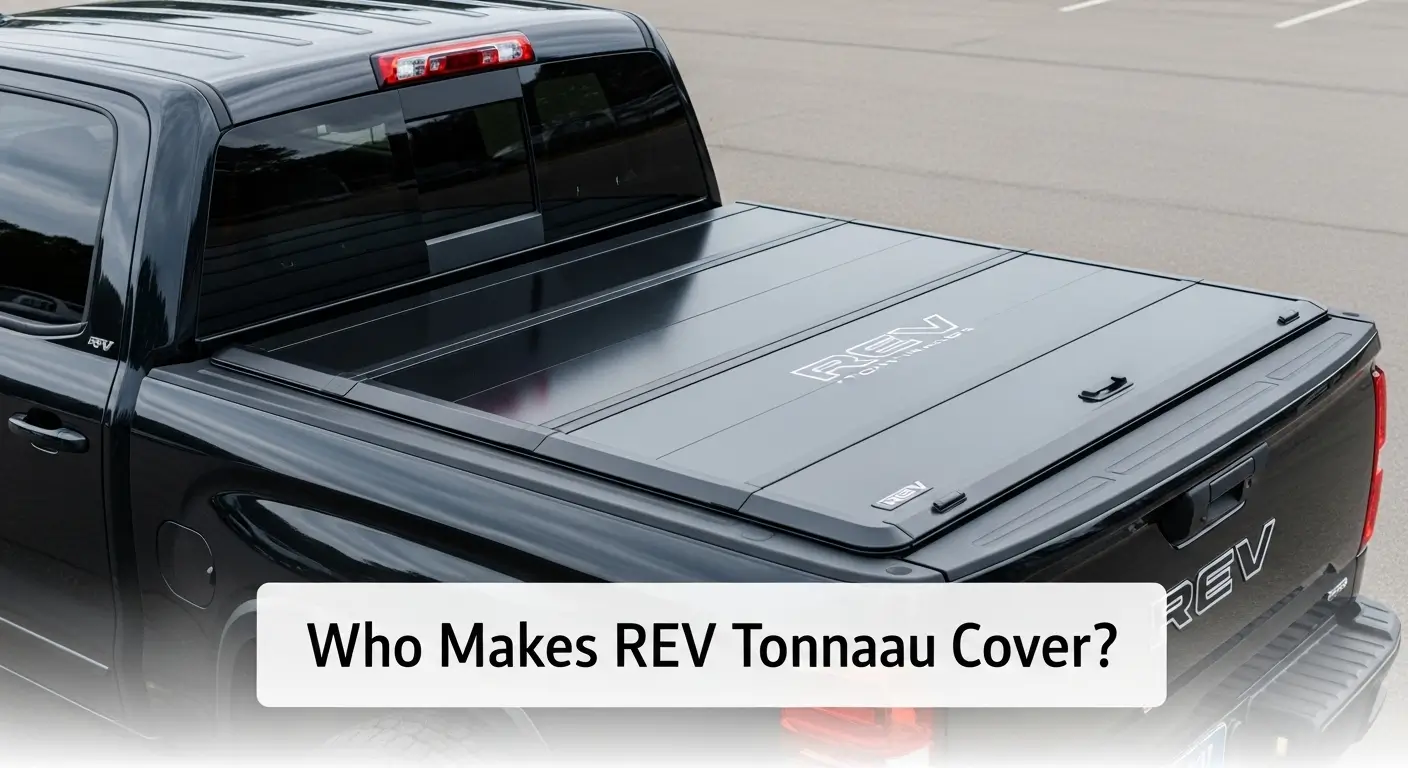Dreaming of truck-bed camping but wondering if that sleek tonneau cover will get in the way?
The good news: yes, in many cases you can camp in your truck bed even with a cover on – but it depends on the type of cover and tent.
Soft roll-up or retractable covers often work just fine, while hard-folding or hinged covers usually must be removed or modified.
In this guide, we’ll explain everything you need to know: the types of tonneau covers, compatibility tips for each, setup best practices, and solutions for tricky situations.
By the end, you’ll know exactly how to prep your truck for a cozy night under the stars – with or without the cover on.
In summary, roll-up and retractable covers generally do work (with the right setup), whereas folding or hinged covers will not work unless you remove them. Retractable tonneau covers work great, while rolled-up ones need to be less than 6 inches high. As for the hinged or folding covers, you need to remove them completely.

Table of Contents
Tonneau Cover Types: Which Ones Play Nicely with Truck Tents?
Not all truck-bed covers are made equal when it comes to tent compatibility. Here are the most common types and how they affect tent setup:
Soft Roll-Up Covers (vinyl roll-up)
These vinyl or canvas covers latch to the rails and roll up toward the cab when open. If rolled up tightly against the cab and the roll is not too big (typically under ~6 inches in diameter), you can often mount the tent straps or clamps around the exposed rails just as if the bed were open.
In other words, a roll-up cover can work if it is fully rolled up and small. Be sure the rolled-up cover doesn’t push into the tent’s floor or gap too much.
Hard Retractable Covers (aluminum slats)
These are rigid slats that roll into a storage canister near the cab (e.g. Retrax covers). They fully retract into a case, freeing the bed rails.
These are the most tent-friendly hard covers: once retracted, there are usually no panels on the bed and the rails are open for tent setup.
Just make sure the canister housing doesn’t stick up too much above the bed – a low-profile canister (or mounting it near the cab) is idea.
In practice, retractable covers “disappear” into a canister, leaving the bed clear. As long as nothing bulky is left protruding, you’re good to camp under a retractable cover.
Soft Folding Covers (tri-fold vinyl)
These have panels that fold up or back (usually in 3 sections) and attach on top of the bed rails. When folded, they still sit on the rails or bulkhead.
Unfortunately, these block the rails under them. Experts agree: soft-folding covers cannot stay on when using a truck tent, because the tent’s poles and straps need the rails free.
In short: a soft tri-fold cover must be completely removed (or folded aside) before camping.
Hard Folding Covers (tri-fold aluminum)
Very similar issue. These heavy, solid panels fold up, but when stowed they sit on the rails or lay flat. They do not roll away. Therefore, hard folding covers must come off for a tent setup.
Hard-folding covers are “a roadblock” to tents: “since they sit on top of the bed rails and don’t retract, there’s no way to install the tent poles properly without taking the entire tonneau off”.
Hinged One-Piece Covers (lid style)
These are single-piece covers that hinge open like a car trunk (e.g. some Hard Tonneau lids). They remain attached and swing up from the tailgate end.
They occupy essentially the entire bed when closed. As you might guess, a hinged hard cover must be removed to use a truck tent.
There’s “nowhere to go” if this cover stays on. You would need to completely detach it before camping.
Removable (Snap-on) Covers
Some aftermarket covers (soft or hard) can be entirely detached from the truck with minimal effort. These are actually fine – if you’re willing to take them off. In many cases, removing the cover (and storing it at home or under the camper) is the easiest solution.
If you can detach the cover and leave only small permanent rail fittings (≤3″) behind, their truck tents fit just fine.
In summary, roll-up and retractable covers generally do work (with the right setup), whereas folding or hinged covers will not work unless you remove them. Retractable tonneau covers work great, while rolled-up ones need to be less than 6 inches high. As for the hinged or folding covers, you need to remove them completely.
Setting Up a Truck Tent with Your Tonneau Cover
Once you know your cover type, here’s how to handle the setup:
With a Soft Roll-Up Cover
Before pitching the tent, roll the cover up as far as possible toward the cab. Strap it tightly so the vinyl bundle is snug (and out of the way).
Ideally the roll is under 6″ high; if it’s fatter, the tent will bulge or leak at that point. With the cover rolled up, you should see most of the metal rails exposed. Now set up the tent per its instructions.
Use the provided straps or poles to attach to the bed rails. Sometimes, the rolled cover adds some height off the rail, so you might need extra-long C-clamps or brackets.
Using deep C-clamps on tent legs to hook over the cover bundle) Secure each corner.
Important: check for any gap between the tent floor and the rolled cover. A small gap can let in water (especially in rain). Some campers use waterproof tape or tuck the tent’s edge under the rolled cover to form a sea. Lastly, double-check that the cover can’t accidentally unroll when windy; tie it down firmly.
With a Hard Retractable Cover
Slide open the cover fully so all slats retract into the cab canister. Confirm that nothing is sticking out above the rail (no cargo stops or roll bars that exceed a few inches).
At this point, the bed is essentially open. Unhook the latch bars if needed, but usually the running gear tucks away on its own.
Now install the tent normally: clamp or strap it to the exposed rails at all four corners. Because retractable covers often leave the rails completely clear, most tents sit exactly as they would on an empty bed.
The only caveat is making sure the retracted canister isn’t too tall – a bulging canister could deform the tent’s floor or affect water runoff.
If your canister is low or flush with the cab, you should have plenty of clearance for the tent. (In short, treat a fully-rolled retractable like a full open bed.)
With a Folding or Hinged Cover
Unfortunately, you usually must remove or stow the cover before using the tent. If you really can’t remove it, the only alternative is a workaround: some campers fold the panels up to the cab and attach the tent above them.
For instance, the panels can be secured upright on one side of the bed to allow tent poles to span over.
(One DIY blogger notes the tent “fits snugly” when the tonneau is folded forward, but warns that it blocks the rear window – sacrificing ventilation and visibility.)
This kind of hack is tricky and non-standard. For safety and ease, it’s usually best to simply take the tri-fold cover out before camping. Then you’re back to a normal tent-on-empty-bed scenario.
If Removing the Cover
Many covers come off with a few bolts or clamps. Plan ahead: remove the cover at home and know where to stow it (garage roof? on the ground under a tarp?).
If the cover isn’t easily removable in the field, consider alternatives (see below). Once the cover is off, treat your truck like any other for a tent.
Note that once removed, the back of the bed is fully open, which means your tent’s tailgate-side entrance can swing completely open as well.
Bonus Tip: Some truck campers actually use the folded cover as an awning. For example, if you leave a tri-fold cover propped up to the cab, the tent’s door can open under that small overhang, creating a little porch.
Just be cautious of gaps and potential pinch points. This is a specialized trick, but it shows that inventive setups exist if you’re careful.
Benefits and Drawbacks of Camping with a Cover
Using a tonneau cover while camping isn’t strictly necessary, but it has pros and cons:
Pros
If you can keep the cover on, you get the usual benefits even at camp. Your gear in the cab-front of the bed stays concealed and rain-sheltered.
The closed cover also cuts wind entering from behind, which might help with warmth in cooler weather. In some cases, the exposed cover top (especially a hard cover) can act like a low roof or partial rain fly, letting water run off.
And if you plan a quick break camp, you just roll up the tent and can leave small items under the cover without repacking.
In short, using the cover can save you time cleaning up cargo and offer an extra layer of weather protection at the rear.
Cons
The obvious drawback is complexity. You have to fiddle with the cover (rolling, removing, etc.) before sleeping. If not done perfectly, a cover can leak around the tent edges.
For example, a rolled cover that isn’t tied down securely might unroll in a storm. Even a small seam gap can drip water onto the tent floor.
There is also a fit issue: the truck tent may end up misaligned if the cover adds height under one end of the tent.
Also, as noted, some setups can block the rear window or reduce ventilation when the cover is in place.
Finally, if you force a non-compatible cover into use, you risk stressing the tent’s poles or straps (and possibly scratching the truck or the tent).
In practice, most campers prefer to remove heavy covers (folding/hinged) because the hassle outweighs the benefit.
But if you have a compatible cover (e.g. a retractable Retrax or a roll-up vinyl), the cover can usually stay on without any safety issues.
Just always check weather proofing – if rain is forecast, double-seal any edges.
Tips & Best Practices for Truck-Tent Campers
Making truck-bed camping smooth often comes down to preparation. Here are some actionable takeaways:
Check Compatibility First
Before your trip, identify your cover type and plan accordingly. If it’s a roll-up or retractable (or easily removed), great.
If it’s a tri-fold or hinged, decide if you’ll leave it at home or remove it in the field. It’s much easier to take the cover off at home and stow it somewhere than fumbling with it at midnight in the woods.
Test the Setup at Home
Don’t wait until the campsite. Set up your tent in the truck at home or in the driveway.
This lets you see how the cover behaves, whether your straps reach around it, and if there are any leaks or gaps.
Practice rolling up the cover and securing the tent. It can save frustration on the actual trip.
Gather the Right Gear
Make sure you have longer or deeper C-clamps if needed, especially for thick or rolled covers. Some tent kits only include short clamps that won’t reach under a rolled cover. Straps with hook-and-loop or ratchet extenders can help.
Also keep extra tarps or waterproof tape handy to seal seams if needed. And pack a spare towel or scrap of carpet to put under straps to protect your paint and trim.
(Ratchet straps can chip paint – a simple cloth pad can prevent that.)
Level & Insulate the Bed
Even without a cover, trucks have ridged metal beds that aren’t the most comfortable floor.
Experienced campers recommend laying down a piece of plywood or carpet under your tent for a flat, insulated platform.
This also helps if you leave the tailgate up – it creates a warm buffer. Insulating is doubly useful if the metal is hot (in summer sun) or cold (in winter chill).
Don’t Over-Tighten Straps
When anchoring the tent straps or ratchets, snug is good but too tight can strain the tent or truck.
WildernessTimes specifically advises not to over-torque the straps, since overtightening can damage the tent or even bend the truck’s metal edges.
A firm pull is enough; listen for tent fabric creaks. Looser straps can be re-tightened later once the tent is fully assembled and all corners attached.
Watch the Weather
If rain is expected, consider this: a rolled-up cover might provide an overhang at the foot of the tent if it extends a bit. But a heavy, flat cover (like a tri-fold) could hold pooled water if not properly slanted.
Always lock the cover down well, and be prepared to adjust tent vestibules or add tarps to divert water.
Rain can sneak between a rolled cover and tent, so keep bedding and gear away from any gap. Better yet, attach the rainfly securely and angle tent to shed water off the sides.
Ventilation Matters
Truck tents can trap heat and condensation just like any tent. If leaving a hard or folded cover up, remember you’ve essentially enclosed the bed even more.
To stay comfortable, crack the rear window of the cab or partially open the tailgate screen (if your tent has one) for airflow.
Also, mesh windows in the tent are critical – leave them open to prevent stuffiness. A common tip: prop the tailgate on blockers or open it for “porch” space if privacy isn’t an issue.
Plan for Privacy and Comfort
A tonneau cover adds shade, but can also block starlight or cross-breeze that a fully open bed might allow. If you like sky-view, roll the cover partially just at the tailgate side.
If bugs are bad, use the cover as an extra barrier.
Also, consider interior lighting: your truck cab interior lamp or a tent lantern can now bounce off the cover differently (so hook your light up high).
Pack Smart
With a cover on, your bed has two zones: under the cover (cabward) and exposed (tailgate side). Keep items you want shielded under the cover (extra clothes, food, electronics).
Leave wet/muddy gear at the tailgate side where rain can drip off the cover above. Always remove loose items from the bed before pitching the tent, or you’ll be crawling over them in the dark.
Alternatives & When Things Don’t Work
If you discover your cover truly won’t cooperate, what are your options?
- Just Remove It. This is the simplest fallback. If you planned ahead, take the cover off and stow it. Camp on the open bed like many truck campers do. You might lose a bit of wind/rain protection, but you’ll gain full tent access and simplicity.
- Use a Short-Term Cover Solution. If you like the idea of cover protection but your cover isn’t compatible, consider lighter alternatives: for instance, a piece of carpet or foam insulator over part of the bed can cover valuables from dew or light rain without impeding the tent. It’s not as sleek as a tonneau, but might be enough if security isn’t a worry.
- Install a Different Cover. If you camp often, you might switch to a more tent-friendly cover permanently. Hard retractables or soft roll-ups are usually cheaper and easier to remove than panel covers. Or check out Softopper (a hybrid soft-shell topper) – it doubles as a tent platform in some configurations, though that’s a bigger conversion.
- Re-think Camping Gear. If tenting with the cover is too much hassle, think about other truck-camping solutions: a roof-top tent on racks, a pop-up camper shell, or even a small travel trailer. These keep your bed free. But of course, they’re different vehicles!
Remember, the goal is to enjoy the outdoors – so use whatever method makes your life easiest. If sleeping under a tonneau-covered bed makes you nervous about comfort or leaks, it might be worth going cover-less (at least for that trip).
Final Thoughts
In short, you can often use a truck tent with a tonneau cover – just match the right kind of cover with the tent setup.
- Soft or Hard Roll-Up Covers: Usually fine if rolled up tightly (keep the roll under ~6″).
- Retractable Covers: Great choice; just retract fully and tent as usual.
- Folding/Hinged Covers: Incompatible in place – best to remove them (or do a complex fold-down hack at your own risk).
Pro tip: measure carefully. The truck tent must align with your bed’s length and width, rails and tailgate.
Fit is the most important factor for a good trip. If your truck bed is on the smaller side (like a Toyota Tacoma or short-bed Ford Ranger), double-check tent dimensions before buying.
By planning ahead, you can save a lot of headaches. Try a dry run, gather proper clamps or straps, insulate the bed, and seal those gaps.
With the right prep, your sleeping quarters will be comfy, secure, and well protected – even if your truck bed stays partially covered. Then all that’s left is enjoying the view and the campfire under the stars.
Ready to hit the road? Test out your setup now and make any tweaks before that first trip.
And if this guide helped you, share it with your fellow truck campers!
For more gear advice and camping tips, sign up for our newsletter or follow us on social. Happy camping and stay safe out there!






